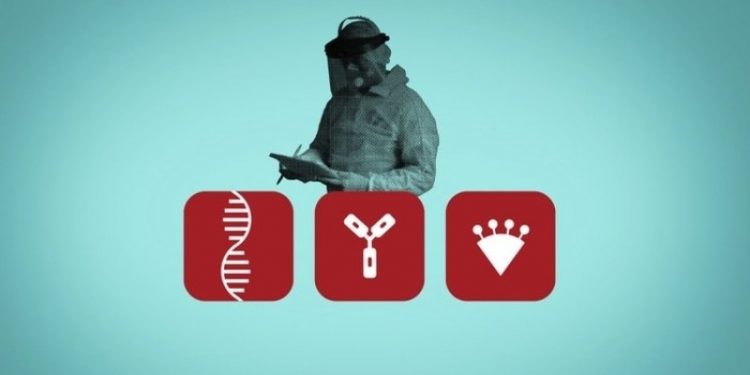There are two main types of test you can take to see if you have been infected by Covid – and a third type which can determine if you have a level of immune-resistance to the virus because you have contracted it before. The type of test you take will depend on your situation, for example, whether you are symptomatic or whether you have travelled.
Over the past year it is likely you have heard lots of conflicting information about which type of test is ‘best’ based on their relative levels of accuracy. The fact is that the two main types of test, PCR and Lateral Flow, both have their purposes and are suitable for different types of situation.
If you are working a front-line job in public service, retail or transport, where you encounter lots of individuals closely on a daily basis, you are likely to be testing twice a week. In this case, the Lateral Flow is most suitable because it can be taken at home, the results are near instant and they are the best reflection of your ‘live’ experience. However, if you are travelling from an amber zone country and are attempting to reduce your self-isolation period, travel test package will be most suitable because of the risks associated with travel.
So What Exactly Are The Differences Between The Tests And How Do They Work?
The basic mechanisms of the tests are the same. They aim to detect the presence of the virus itself. Antibody tests are different in that they seek out the immune system’s reaction to the virus, but this will be outlined further below.
Polymerase Chain Reaction (PCR) Tests
These are the tests that have been previously described as ‘better’ and more accurate. You are advised only to get one if you have symptoms of Covid or have been in contact with someone who has. This is because it takes a significant amount of resource to process a PCR test. They need to go away to a lab to be processed. Of course, no one is suggesting that you should hold back on getting a PCR test is you need one – but the guidance is that they are best used for where a significant risk of infection has been identified.
PCR tests work by detecting the presence of ‘RNA’, the chemical that holds the genes of the Covid virus. In the lab, a substance is added to the sample you provide in your swab, and this acts to create more copies of the RNA when it is present. This pushes the amount of RNA up to the threshold where it can flag that the virus is there, and the result is positive.
Lateral Flow Tests (Also Known As Antigen Tests)
These are the tests you are likely to have piling up spare in your home. They look and work in a very similar way to pregnancy tests and are most suited to the routine bi-weekly testing that so many of us have become used to over the past months. They work via a strip coated in antibodies that react to the presence of the Covid-19 virus. If the virus is present, then the strip will change colour, leading to a coloured line in the window of the test.
Antibody Tests
These tests work in an entirely difference way. They are attempting to detect the presence of antibodies in your blood, which you need to provide for the test. This cannot be done with salvia or a nasal swab because antibodies circulate the body’s blood vessels in such small quantities that a full tube sample is required. They can detect if you have resistance to the virus after recovery. Antibody tests are not currently in wide usage in the UK and you are unlikely to need this type of test in the course of normal life and leisure.
Final Words
Thanks to the great efforts of healthcare providers around the world, we have an array of test to help us deal with the current pandemic. If you are in a situation where you are required to test, make sure you read the instructions carefully and follow the guidelines.
Follow Techdee for more!





